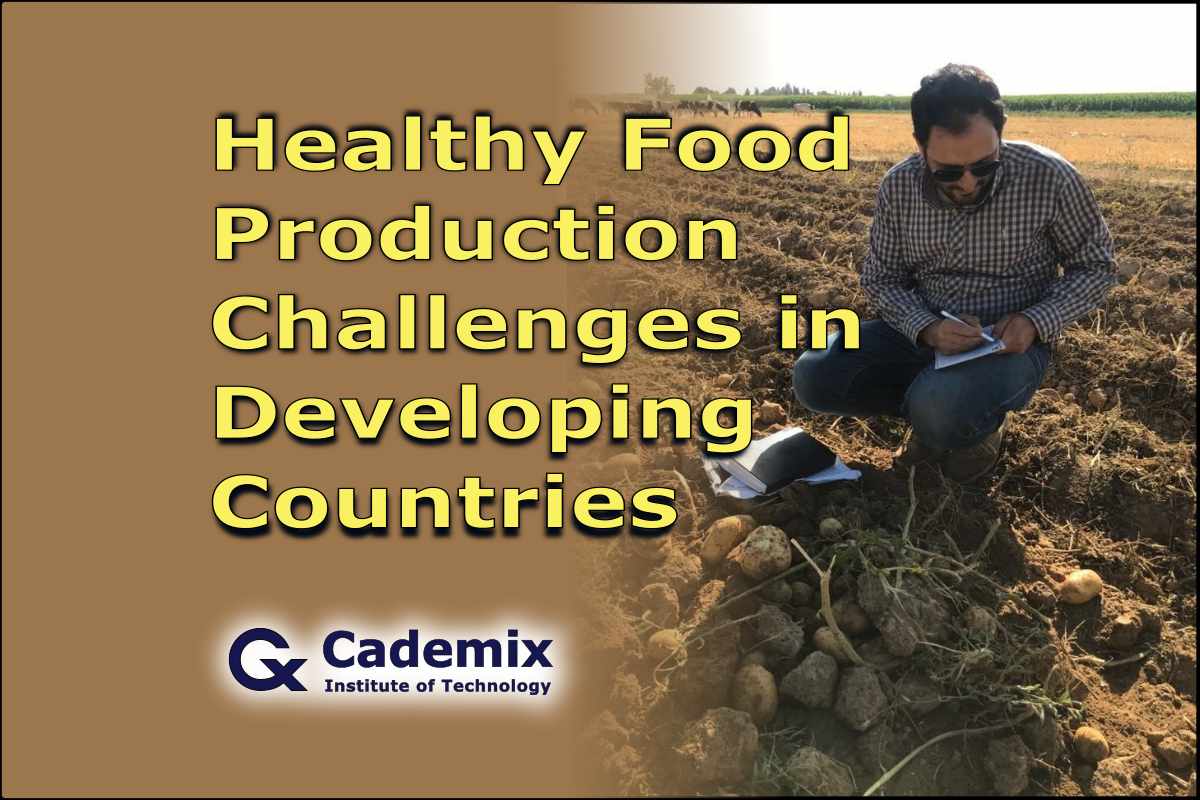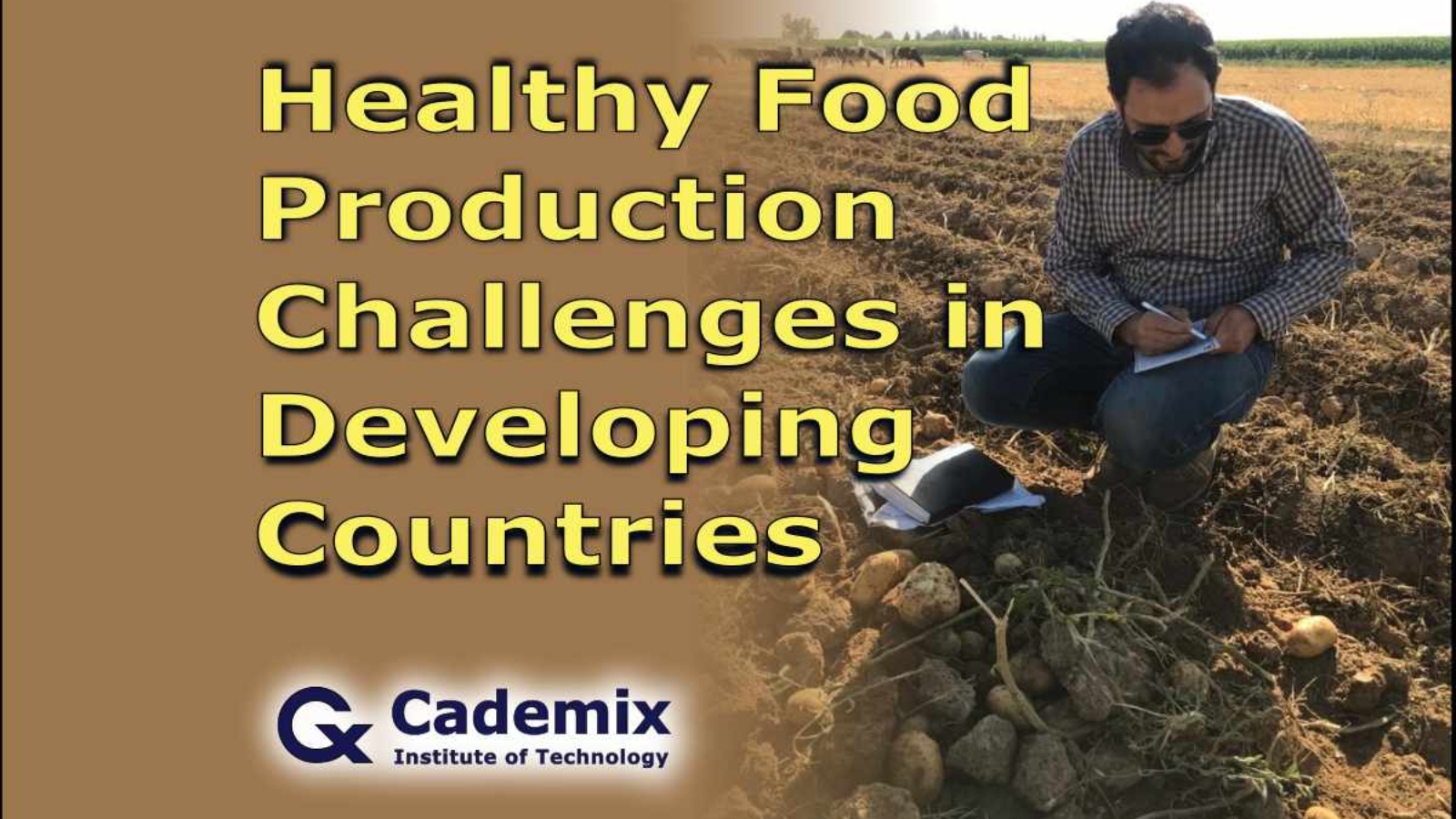In this article we discuss the challenges of Healthy Food Production in Developing Countries. We also talk about the urgency of Healthy Food production and challenges ahead. Then we suggest a solution as well as practical measures to Healthy Food Production.
By Hossein Nazarian, Cademix Institute of Technology.
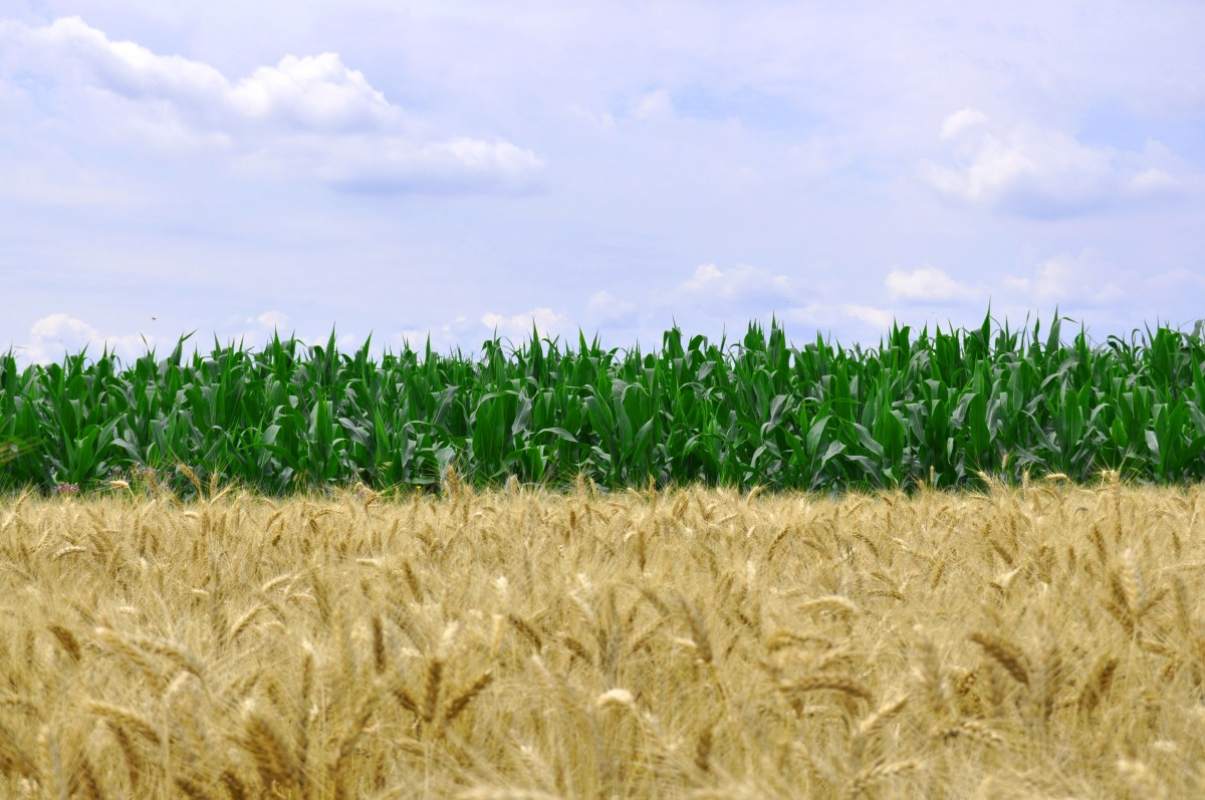
Concerns of Supplying Healthy Food
Nowadays the major concern of human societies, especially in developing countries counts supplying food for people. Food insecurity is becoming more widespread in many countries. Chronic and acute hunger were on the rise even before COVID-19 decreased earnings and disrupted supply chains, due to a variety of variables such as socioeconomic conditions, natural disasters, climate change, and Production challenges in agriculture. Apart from the great importance of food quantity, quality means the content and healthy of food are very important. Healthy Food also has a direct impact on the good physical and consequently mentally condition of people in the communities.
United Nation’s Report
According to the State of Food Security and Nutrition in the World 2020 study, if sustainability factors are taken into account, a global shift to healthy diets will help prevent a return to hunger while also saving enormous amounts of money. The threat is that in some developing countries, not only is there not enough food, but also agricultural products have contaminants that endanger people’s health. The contamination caused by the overuse of pesticides and chemical fertilizers in agricultural products is the subject of this article, and we will suggest solutions to resolve the problem and improve it.
UN offices working for nourishment security too works to assist anticipate starvation within the future. They do this through programs that utilize nourishment to construct resources, spread information and sustain more grounded, more energetic communities. This makes a difference communities gotten to be more nourishment secure.
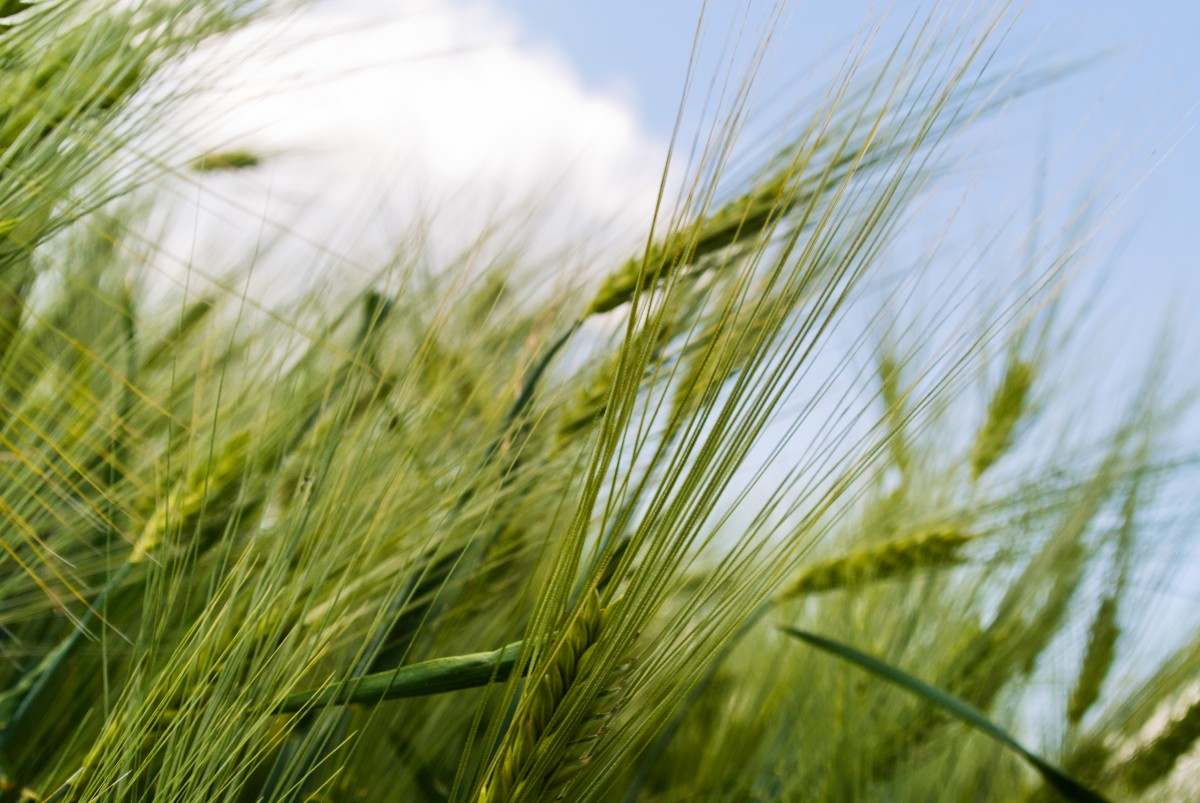
Necessities of Healthy Food Production
What Is The Definition of a Pesticide?
To clarify the issue, first of all, it is necessary to define the pest. Base on general definition pests are insects or other animals that creates pressure on crops, food, and other valuables by damaging them. With a few minor exclusions, pesticide law defines a “pesticide” as:
- Any substance or combination of compounds used to prevent, eliminate, repel, or mitigate pests.
- Any substance or combination of substances used as a plant regulator, defoliant, or desiccant.
- Nitrogen stabilizer.
Pesticides can have acute, or short-term, negative health impacts, as well as chronic, or long-term, negative health effects that can develop months or years after exposure. Stinging eyes, rashes, blisters, blindness, nausea, dizziness, diarrhea, and death are examples of acute health impacts. Cancer and other tumors, as well as harm to the brain and nerve system, birth defects, infertility and other reproductive issues, and damage to the liver, kidneys, lungs, and other body organs, are all long-term health impacts. Chronic effects might take weeks, months, or even years to manifest, making it difficult to link pesticides to health issues.
Healthy Food Production Risks
Plant Damages Caused by Pesticides and Fertilizers
Pesticide might burn leaves and fruit, also known as phytotoxicity, occurs when chemicals are misused or applied incorrectly to plants. Leaf spots, blotches, scorch, and tip burn were among the symptoms. When incompatible substances are used at the same time, phytotoxicity can occur. Any natural or manufactured item that is applied to soil or plant tissues to offer plant nutrients is referred to as a fertilizer. Liming materials and other non-nutrient soil additives are not necessarily fertilizers. Fertilizer comes in a variety of forms, both natural and man-made.
Chemical Fertilizers’ Negative Effects
Chemical fertilizers have a function in increasing plant nutrients in adverse weather conditions or when plants require additional nutrients, but they also have a number of negative side effects. Waterway pollution, chemical burn to crops, increased air pollution, soil acidification, and mineral depletion are just a few of the problems that chemical fertilizers can create. Chemical fertilizer use on crops can have negative consequences for waterways due to chemical runoff from excess fertilizer. The amount of oxygen in the water is reduced due to an excess of nutrients. The oxygen that is left is used up by the existing organisms in the water. As a result of the oxygen loss, the fish die.
Chemical fertilizers are high in nitrogen and other nutrients. Excessive chemical fertilizer application to plants can cause the leaves to turn yellow or brown, causing the plant to suffer and lowering crop yield. Chemical leaf scorch is the name for this condition. Leaf scorch can cause the plant’s leaves to wither and eventually die.
Excess nitrogen in fertilization
Excess nitrogen in crop fertilization can contribute to greenhouse gas emissions such as carbon dioxide and nitrous oxide. The use of a higher amount of chemical fertilizer than the plants can readily absorb causes this effect. Excess greenhouse gases trapped in the atmosphere, according to the National Oceanic and Atmospheric Administration’s Climate Monitoring and Diagnostics Lab, may be contributing to rising land and ocean surface temperatures.
Chemicals Negative Effects on Soil
Because of a loss in organic matter in the soil, overuse of chemical fertilizers can contribute to soil acidity. Nitrogen sprayed in significant quantities to fields over time destroys the topsoil, resulting in lower crop yields. Soil acidity is far more common in sandy soils than in clay soils. Excess chemical fertilization has the ability to be buffered by clay soils. Continuous usage of chemical fertilizers on soil is raising concerns that it is depleting the soil of key nutrients. As a result, the food grown in these soils is deficient in vitamins and minerals. Foods cultivated in chemically fertilized soils had lower magnesium, potassium, and calcium levels, according to data from the United States Department of Agriculture Nutrient Data Laboratory.
Healthy Food Supplying
Review on the problem
Population growth and the growing need for agricultural products and the presence of harmful factors have led to an increase in the use of pesticides and fertilizers in developing countries. On the other hand, irregular and improper use of pesticides and the presence of their residues in crops and orchards have led to environmental problems and many diseases and human anomalies in communities. Moreover, Pesticides misuses leads to some economic consequences, because residual toxins of insecticides cause to accumulation of harmful elements such as nitrate in crops tissues make it difficult to export these products and lead to the return of export shipments.
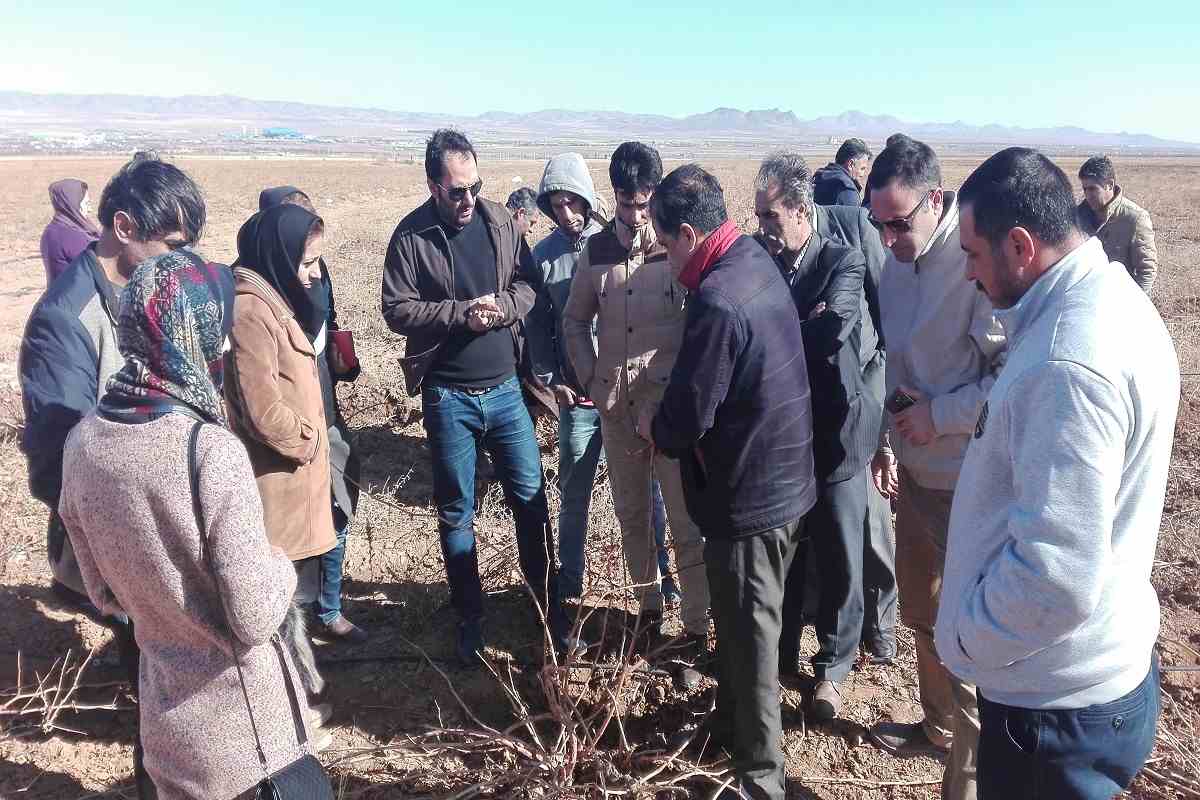
Challenges of Healthy Food Production in Developing Countries
These are the major challenges from our own perspective and experience in the developing countries.
- It is impossible to monitor the production crops due to lack of identification of production units.
- Lack of sufficient awareness of farmers in terms of time and amount of pesticide use.
- Consumption of cheap and low quality -cides (pesticides, fungicides,…).
- Illegal purchase of -cides from unreliable sources.
- Same pesticide usage for several crops by farmers.
- Lack of attention to PHI that also known as the Waiting Period. PHI is the time span between when a chemical pesticide is sprayed and when the chemical residue on the crop/fruit is still visible while a crop can be harvested.
- Sell pesticides without expert’s prescription.
- Traditional subordination of farmers to each other.
- Lack of proper equipment in laboratories for pesticide quality control.
- Decreased quality of phytotoxins due to lack of proper distribution and maintenance.
- Long process of registering low-risk phytotoxins in legal authorities (PPO; Plant Protection Organisation).
- Lack of or low usage of organic pesticides.
- Return of agricultural products shipment due to residual pesticides toxins.
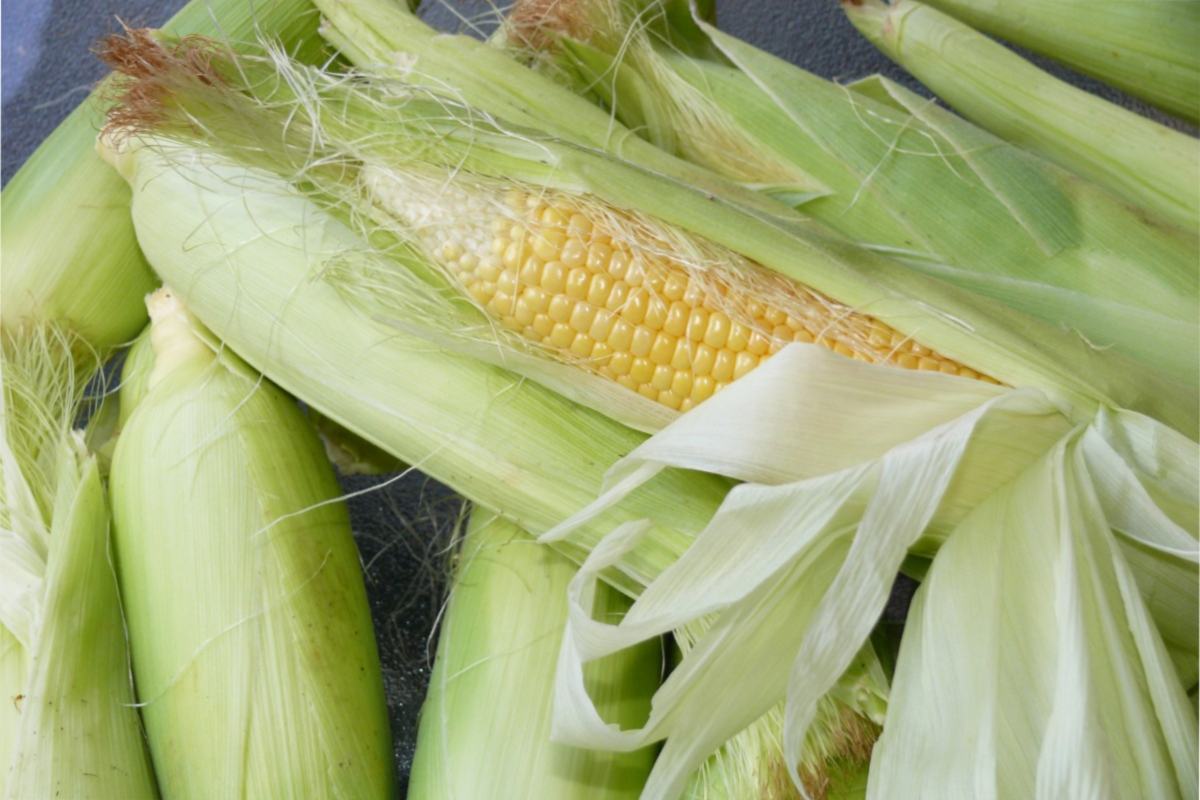
Solution for Healthy Food Production
Given the challenges mentioned above, three strategies are proposed to control the use of pesticides and residual pesticides in agricultural products;
a. Planning to register agricultural production units (Gardens, Farms, Green houses) in order to facilitate the tracking of the product.
b. PPO action to replace low-risk phytotoxins.
c. Educate and promotion of farmers with the support of public and private radio and televisions.
Practical measures to Healthy Food Production
- Eliminate and replacement of hazardous phytotoxins with new and responsive patents (New generation of toxins with maximum 3 days waiting period; PHI and the possibility of optimal performance at very low dosages).
- Eliminate government support for the import of high-risk pesticides.
- Gradual requirement of domestic producers and to provide special facilities for the production of low-risk pesticides.
- Quality control of raw material (pesticide’s technical) imports.
- Periodic sampling and inspections of manufacturing companies and pesticide distribution stores by PPO.
- Monitoring of pesticide distribution stores by creating a pesticide sales system and delivery based on the expert prescription and registering the location and type of product on which the pesticide is used to enable product monitoring.
- Combating the illegal distribution of phytotoxins as well as preventing the distribution of counterfeit and unauthorized pesticides.
Other measures
- Support the development of biological and non-chemical pest control in the form of integrated pest management program (IPM).
- Collecting taxes on ecosystem pollutants and spending it on the relative reconstruction of the ecosystem.
- Provide educational content for the management of manufacturers, importers, distributors, and consumers of pesticides in coordination with PPO.
- Strengthen Plant Health Clinics to provide educational services to farmers.
- Develop a GAP (Good Agriculture Pprogram) and educating farmers through brochures and media and creating incentive programs.
- Encourage food processors and producers to comply with requirements and establish quality management systems.
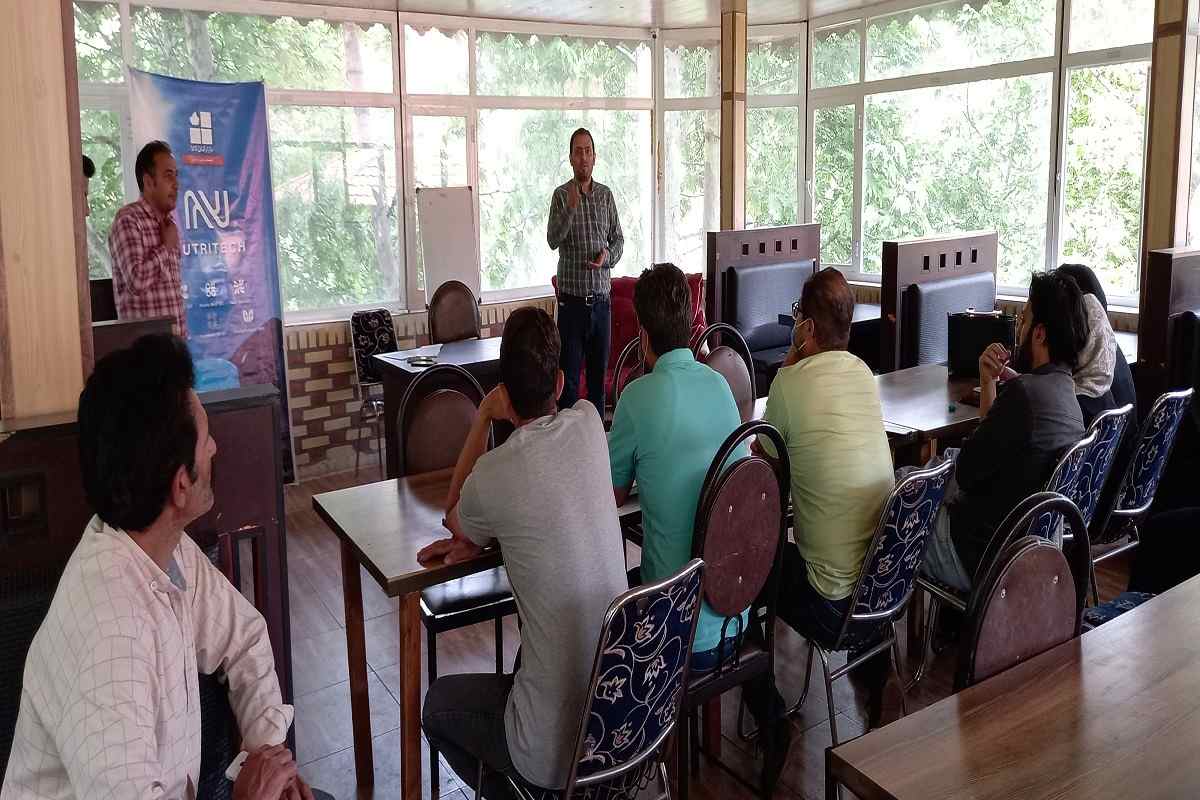
I hope you find this article (Healthy Food Production Challenges in Developing Countries) useful.
Here it is some of my articles you can find them:
. Vertical Farming with Artificial Light: Review and Future Advancement.
. Growing in Sawdust: Alternative Planting Medium in Vertical Farming.
. In vitro Regeneration of Alstroemeria cv. ‘Balance’ by Indirect Organogenesis.
. In vitro Regeneration of Alstroemeria cv. ‘Balance’ Based on Direct Organogenesis.
. Innovative Optimal Approach to Implement Fast Propagation Tissue Culture.
Feel free to contact me for questions, consulting or any projects.
Email: hossein_nazarian@yahoo.com
Email: hossein.nazarian@cademix.org
LinkedIn: https://www.linkedin.com/in/hossein-nazarian/
Xing: https://www.xing.com/profile/Hossein_Nazarian
About the Author
Hossein Nazarian is a graduate of MSc. in Agricultural Biotechnology Engineering from Iran and an associate member at the Cademix Institute of Technology and the Cademix Career Autopilot Program.
He has also obtained his bachelor diploma in Plant Production Engineering which has provided him with an understanding of different aspects of agriculture. For instance he was working on cultivation, irrigation, fertilization, plant protection and commercial services. He has been working in several areas in agricultural sector since 2009. He has valuable experiences as an instructor and technical expert in plant pests, diseases, nutrition, and plant protection programs. Also He he has some experiences in the greenhouse cultures and plantlets produce through artificial light in the shelves. He has been working in agribusinesses for 12 years and try to solve farmers’ problems. Further he helps to produce healthy products to improve the health level of society.
Specialties: Plant nutrition, Plant protection, Field management. Greenhouse consultant (rose, cucumber, strawberry, transplant,…), Tissue culture, Marketing, Agile management.
Related Keywords
Healthy food production, Healthy food supplying, Healthy food production risks, Developing countries, Food security, Food safety, Food chain, Food supply, Chronic hunger, Acute hunger, Natural disasters, Climate change, Production challenges in agriculture, Food quantity, Food quality, Pesticide, Pest, Pesticide damages, Fertilizer, Chemical fertilizers, Chemical fertilizers negative effect. In addition, Pollution in waters, Burning chemicals, Air pollution, Depletion of minerals, Plants, Crops, Plant Protection Organization (PPO), Pesticide, Fungicide, Cides, Phytotoxin, Pesticide residues, Agricultural product, PHI, Waiting period, Integrated Pest Management, IPM, GAP, Good Agriculture Program. Further other keywords are Toxic, Human health, Insecticide, Herbicide, Fungi, Crop production, Groundwater, Manure, Organism, Insect, Growers, Plant growth, Fertility, Usda, Soil fertility, Soil health, Ecological, Natural food, Wholesome, Beneficial, Hygienic, Invigorating, Nourishing, Nutritious, Salubrious, Salutary, Organic food, Sustainable agriculture.
